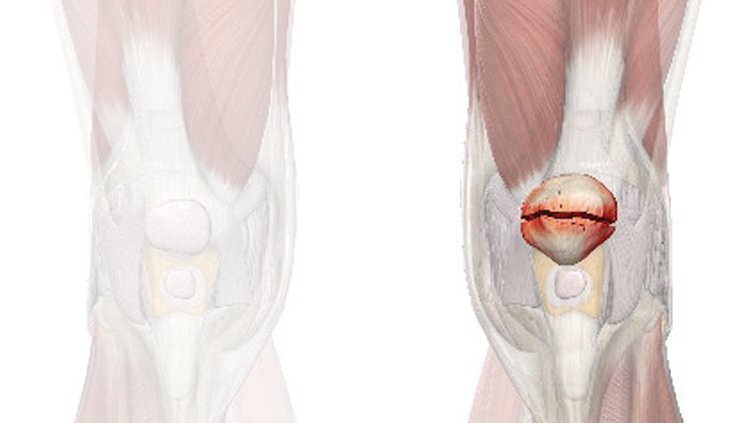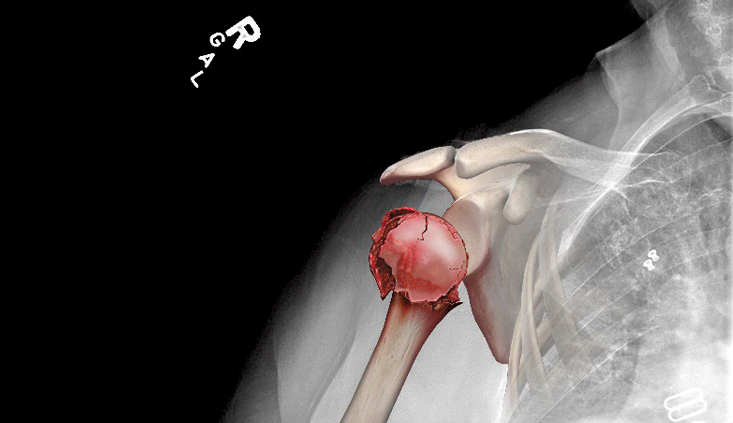Your plaintiff died. Now what?
Amending the complaint to allege a survival action or wrongful death claim
The death of your plaintiff need not mean the end of their case. A personal-injury claim may be amended to allege the deceased plaintiff’s claims in a survival action, and if they died as a result of their injuries, may also be amended to add a wrongful death claim.
The right to amend the case to correctly plead a survival and/or wrongful death cause of action is well established. Courts have broad discretion to allow amendments to pleadings “in furtherance of justice.” (Code Civ. Proc., § 473, subd. (a).) For over a century, it has been established policy in California for courts to liberally permit amendments to pleadings at any stage of the case. (Hirsa v. Superior Court (1981) 118 Cal.App.3d 486, 488-489.) This policy is so strong that denial of leave to amend is rarely justified. (Morgan v. Superior Court (1950) 172 Cal.App.2d 527, 530.) Trial courts have discretion to permit any sort of amendment, including those seeking to add parties, theories of relief, claims, and remedies. (Code Civ. Proc., § 473, subd. (a)(1).) As long as the motion to amend is timely made, and granting it will not prejudice the opposing party, “it is error to refuse permission to amend; and, where the refusal also results in a party being deprived of the right to assert a meritorious cause of action, it is not only error but an abuse of discretion.” (Morgan, supra, at 530; Kittredge Sports Co. v. Superior Court (1989) 213 Cal.App.3d 1045, 1047.) And when an amendment seeks only to add theories of liability against an already named defendant, “it is difficult to understand how such a defendant can be prejudiced” through such amendment. (Hirsa, supra, at 490.)
These principles are so non-controversial that, in our experience, defendants rarely bother to oppose such a motion to amend. Nonetheless, take the process of amending the complaint seriously; the burden of proof is very low, but the procedural requirements are specific. And, while you will likely want to give surviving family members time to grieve before asking them to start up their loved one’s lawsuit, be mindful that you could be facing multiple and rapidly approaching statutes of limitations. For example, in a pending personal injury case, the statute of limitations to add any new defendants may be as soon as six months after the injured person’s death. (Code Civ. Proc., §366.1.) Different statutes of limitations may apply to any wrongful-death claims.
The first step, on learning that your plaintiff has died, is to inform the court and all parties, generally through filing and service of a “Notice of Death.” Unless your court has local rules specifying a more involved procedure, this can be a simple one-page pleading stating the plaintiff’s name and date of death, and asking that the matter be stayed pending your motion to amend the complaint. Once you have discharged this ethical duty, you should quickly determine whether your amended complaint will allege survival claims, wrongful-death claims, or both. If you decide that the decedent’s case should continue as a survival claim, your next step is to select the right person to act on the decedent’s behalf.
Survival claims
A cause of action by a person normally is not lost by reason of the person’s death. (Code Civ. Proc., § 377.20, subd. (a).) And the continued proceedings, generally referred to as a survival action, don’t create any new causes of action; instead, they “merely prevent the abatement of the cause of action of the injured person, and provide for its enforcement by or against the personal representative of the deceased.” (Grant v. McAuliffe (1953) 41 Cal.2d 859, 864.) (Be careful not to rely on older law or outdated motion samples that state the amended complaint will not assert the deceased plaintiff’s claims for pain, suffering, and humiliation. Under the recently-amended Code of Civil Procedure section 377.34, in most circumstances those damages now survive as well.) In effect, the personal representative or successor-in-interest ‘steps into the shoes’ of the former plaintiff to continue their claims. (Exarhos v. Exarhos (2008) 159 Cal.App.4th 898, 905.)
To do so, the deceased plaintiff’s personal representative or successor-in-interest may bring a motion to continue the proceeding, which the court “shall allow.” (Code Civ. Proc., § 377.31.) This right of substitution “is absolute if the cause of action survives death.” (Pepper v. Superior Court (1977) 76 Cal.App.3d 252, 260.) As the Law Revision Committee comments to Code of Civil Procedure section 377.31 emphasize, “the personal representative or successor in interest has an absolute right to be substituted for the decedent; substitution in this situation is not discretionary with the court.”
Be aware that “personal representative” and “successor-in-interest” are not interchangeable terms. A personal representative is the executor, administrator, or other person overseeing the decedent’s estate (Prob. Code, § 58), while the successor-in-interest is either a beneficiary of the decedent’s estate, or “other successor in interest” who succeeds to the cause of action, or property that is the subject of the causes of action. (Code Civ. Proc., § 377.11). In practical terms, you will be choosing either the executor of the deceased plaintiff’s estate if there is formal probate, or their surviving family if there is not. As the Ninth Circuit summed up: “If an estate is formally probated, the estate’s personal representative brings the decedent’s legal claims. If not, the successors in interest do.” (Estate of Cornejo ex rel. Solis v. City of Los Angeles (9th Cir. 2015) 618 Fed.Appx. 917, 919.) Note that, as the title implies, a “successor-in-interest” must be someone who did not already have the subject property, or a cause of action, assigned to them during the deceased plaintiff’s lifetime; they can’t “succeed” to a claim to which they were already a party.
If the deceased plaintiff’s estate is in probate, your choice is made for you; but if not, the better option is almost certainly the successor-in-interest, particularly if that person has a wrongful-death claim arising out of the same injury that killed your plaintiff.
Appointing the successor-in-interest
Who do you choose as a successor- in-interest? There is a prescribed order, but the surrounding laws make it clear as mud. Code of Civil Procedure section 377.30 states that the decedent’s successor-in-interest is “subject to Chapter 1 (commencing with Section 7000) of Part 1 of Division 7 of the Probate Code.” And Probate Code section 7000 states that property passes through a decedent’s will, or if there is no will, “to the decedent’s heirs as prescribed in the laws governing intestate succession.” Intestate succession is finally laid out in Probate Code section 6400 et seq., which suggests that the surviving spouse is the default successor-in-interest; if there is no surviving spouse, then the immediate order of precedence is the decedent’s children, parents, siblings, and then grandparents. (Prob. Code, § 6402.) Persons with co-equal standing under the rules of intestate succession can be co-successors-in-interest.
As part of your motion to amend, you will need to provide a declaration, executed by the successor-in-interest, which conforms to the requirements of Code of Civil Procedure section 377.32. Note that there is certain language in this statute that is mandatory and specific; for example, your successor must explicitly declare “No proceeding is now pending in California for administration of the decedent’s estate.” While it’s common in some statutes to require language that need only be ‘substantially similar’ to what is in the statute, here there are several statements that must be affirmed exactly as they appear. You also will need a copy of the Certificate of Death (remember to redact the Social Security Number pursuant to Cal. Rules of Court, rule 1.201).
What if your potential successor-in- interest is unable or unwilling to serve? For example, a deceased plaintiff’s spouse who is elderly and in poor health might ask that his adult daughter instead act as the successor-in-interest on behalf of the family. While the widower is “first in line,” the code explicitly permits another person to step in as successor -in-interest. (Code Civ. Proc., § 377.32.) You would then have two declarations prepared; the adult daughter’s would state that she is “authorized to act on behalf of the decedent’s successor in interest” (Code Civ. Proc., § 377.32, subd. (a)(5)(B)), and a declaration from the spouse stating that he is the successor- in-interest, but authorizes the daughter to act as successor-in-interest on his behalf.
Adding a wrongful death claim
If the decedent’s cause of death is related to the original case – for example, if a plaintiff who filed a personal injury case succumbed to their injuries – you should also plan to amend the complaint to allege wrongful death claims, as the heirs have a statutory right to recover the loss they suffered from decedent’s death. (Code Civ. Proc., §§ 377.60-377.62; San Diego Gas & Electric Co. v. Superior Court (2007) 146 Cal.App.4th 1545, 1550-1551.)
While there’s no special declaration needed by the wrongful-death heirs, you will need to ensure that you correctly name all plaintiffs, that the plaintiffs indeed possess legal standing, and that all wrongful death heirs become plaintiffs (or else nominal defendants).
First, it is likely that the personal representative or successor-in-interest has an independent wrongful death claim. Second, you may be adding plaintiffs who were not parties to the personal injury action. A typical example is a case in which an injured plaintiff, married with children, brings a personal injury matter, and their spouse is also a plaintiff alleging loss of consortium. When the injured plaintiff dies, the surviving spouse is first in line to act as successor-in-interest in a survival action; she also has an independent claim for wrongful death, and she still has her pre-death claim for loss of consortium. Their children, who were not and could not have been parties to the original personal-injury and loss-of-consortium action, now have claims for wrongful death.
Your motion to amend will already seek leave to substitute the personal representative or successor-in-interest for the deceased plaintiff in order to continue the matter as a survival action, so your motion will additionally seek leave 1) to add the new wrongful-death claimants as plaintiffs, and 2) to allege claims for wrongful death.
Note that if the decedent’s cause of death was wholly unrelated to the injury that was the subject of their lawsuit, you won’t amend this complaint to add wrongful-death claims. If the cause of death was an independent tort for wrongful death unrelated to the existing case, you should file that case separately and then consider whether it would be appropriate to consolidate the two causes of action. That decision is beyond the scope of this article.
Putting the motion together
If you discover that you are up against a statute of limitations, consider an ex parte application to shorten time, or even a separate lawsuit. But otherwise, your motion to amend will be a standard, noticed motion. You should plan to attach as exhibits: the decedent’s death certificate (again, redacting the Social Security number if it is present); the declaration of the personal representative or successor-in-interest; your supporting declaration; and the proposed, amended complaint as you intend to file it. Your moving papers should explain the substantive changes made to your proposed amended complaint (Cal. Rules of Court, rule 3.1324), including substituting ‘decedent’ for ‘plaintiff’ where appropriate, adding new defendants if you are doing so, substituting the successor or personal representative, and adding or amending claims, including wrongful-death claims.
The caption of your proposed amended complaint should clearly set out the roles of the plaintiffs. As an example, assume that your plaintiff Sam Garcia was severely injured, but succumbed to their injuries shortly after filing suit. You want to amend the complaint to name the surviving spouse, Robin Garcia, as the successor-in-interest, and to add Robin and the couple’s children Maria and Lourdes as wrongful-death plaintiffs. Your new complaint would caption the plaintiffs as: ROBIN GARCIA, individually and as successor-in-interest to SAM GARCIA; and MARIA GARCIA AND LOURDES GARCIA, Plaintiffs. If, however, Sam had instead died of an unrelated cause such that there was no wrongful-death claim, you would instead caption the complaint to identify: ROBIN GARCIA, individually and as successor- in-interest to SAM GARCIA, Plaintiff.
Conclusion
The death of an injured plaintiff is not enough to let tortfeasors escape accountability for their actions. By promptly moving to amend the operative complaint and appropriately name all parties, a deceased victim’s claims can be continued to allow compensation for their surviving loved ones.
Laurel Halbany

Laurel Halbany is an attorney at Kazan, McClain, Satterley and Greenwood in Oakland, representing victims of asbestos-related disease, particularly mesothelioma. She is vice-chair of the AAJ LGBT Caucus, an at-large member of the CAOC Board of Governors, and received the CAOC Presidential Award of Merit in 2017 for advocacy on behalf of asbestos victims.
Michael Stewart

Michael Stewart joined Kazan, McClain, Satterley and Greenwood in 2006. He mainly works on large writing projects in the trial and appellate courts. In recognition of Michael’s skill and professionalism, he was selected to Super Lawyers – Rising Stars Edition in 2013, 2014 and 2015.
Copyright ©
2026
by the author.
For reprint permission, contact the publisher: Advocate Magazine


